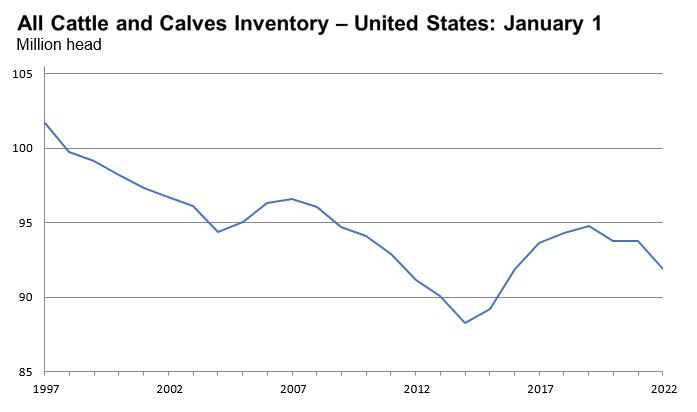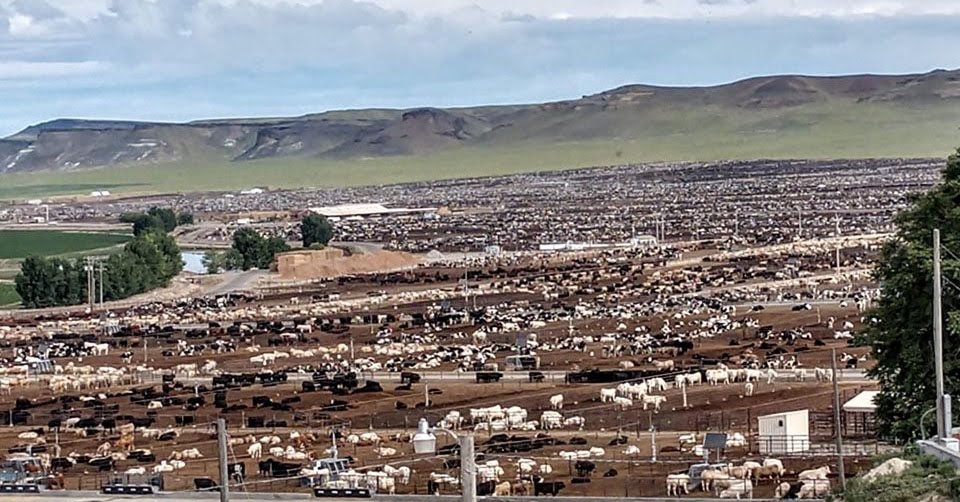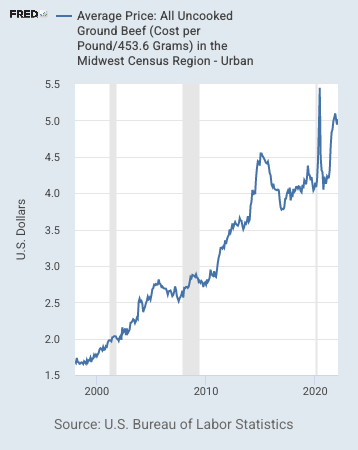Green grass is growing finally down south as some rainfalls are being received east of the Colorado River, not that Colorado River, the other one that moves through Austin, and has very little to do with it’s namesake. Grass growing in the spring brings on the grazing and let’s the ranchers get off the expensive feed. Now is also the time to sow sorghum for the herds to clear in the next few months. Net, net it’s still an expensive business to be in. As the ranchers eyed the beginning of this year, a reduction had been discussed in the total herd population. A culling of 800,000 was expected to drive farmgate prices up to actually cover costs, as the packers have gotten record bounties, the ranchers have enjoyed none of higher prices. The supply
Topics:
Michael Smith considers the following as important: Cattle report, Featured Stories, food supply, Hot Topics, inflation, Michael Smith, US/Global Economics
This could be interesting, too:
NewDealdemocrat writes JOLTS revisions from Yesterday’s Report
Joel Eissenberg writes No Invading Allies Act
Ken Melvin writes A Developed Taste
Joel Eissenberg writes How Tesla makes money
Green grass is growing finally down south as some rainfalls are being received east of the Colorado River, not that Colorado River, the other one that moves through Austin, and has very little to do with it’s namesake. Grass growing in the spring brings on the grazing and let’s the ranchers get off the expensive feed. Now is also the time to sow sorghum for the herds to clear in the next few months. Net, net it’s still an expensive business to be in.
As the ranchers eyed the beginning of this year, a reduction had been discussed in the total herd population. A culling of 800,000 was expected to drive farmgate prices up to actually cover costs, as the packers have gotten record bounties, the ranchers have enjoyed none of higher prices. The supply adjustment ended up being a little over three million culled. Total herd population is now 91.9 million with nine of that in the dairy barn.
The USDA headcount for beeves is now 2% lower than where we were last year. There are quite a few reasons for this:
- Ranchers are barely making money on the herds due to pricing pressures from the processors
- Lack of grazable fields out west due to considerable drought west of the Mississippi
- Feed prices are up 7% from just a few months ago, and likely to continue to rise further
- Transport prices have shot up due to increase in diesel costs
We’ve also seen considerable slow downs at the auctions that feed the system. At this point last year 394,000 head were moved in a week, this year only 288,000 were moved on the 10th of March, a considerable decline. Auction prices have also responded in kind with Carl Hermann of the Caldwell Livestock Commission calling a higher strike price recently. This time last year 400 pound prime steers were auctioned for $1.81 per pound, the March 9th moves for the 400 pound class are now $1.97 per pound. This is around a $62 increase per calf head in my area year over year. Most auction reports are notated in the hundreds of pound per last week’s range ledger, which is now higher still:
Feed prices have gone up $40 a ton in the past six months. Given that each beeve will consume around 25 pounds of feed per day, an operation such as the J.D. Simplot Company in Idaho with 150,000 head to feed just saw their daily feed bill go up $1,875 a day.
Most concentrated feedlot operations feed out cattle for around 100 to 120 days. This increase is a bit staggering, but given last year’s ending silage increase, not unexpected. Six months out are showing much higher beef prices. It is still to be shown what the processors and retailers are willing to absorb, but $5 per pound ground beef on average has been here in the US since February per the St. Louis Fed, with record profits from the processors still being had, I don’t expect the Big Four to absorb much, as with the retailers.
I expect this trend to continue over the next three to six months until silage harvest can be assessed. With fewer head, drought, and high feed prices, I don’t see this trend reversing this year and depending upon this crop year, further inflation and the ongoing European conflict, we could see new records in food system prices.




